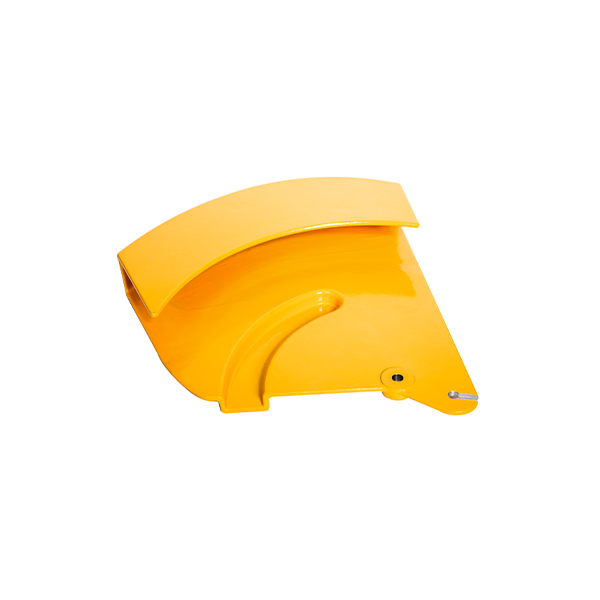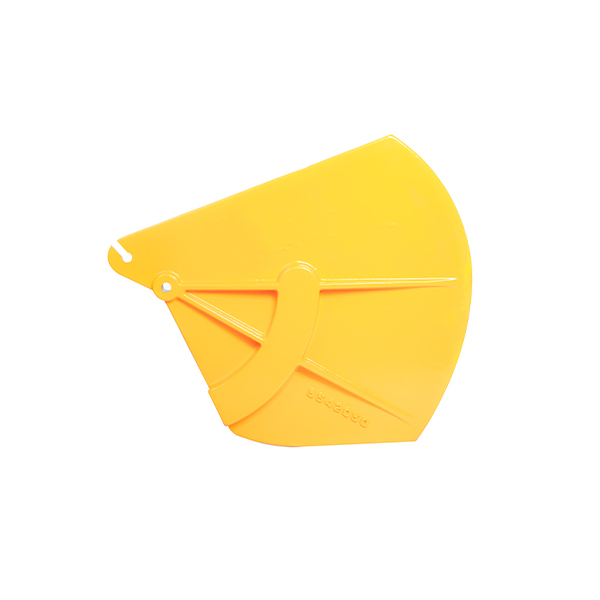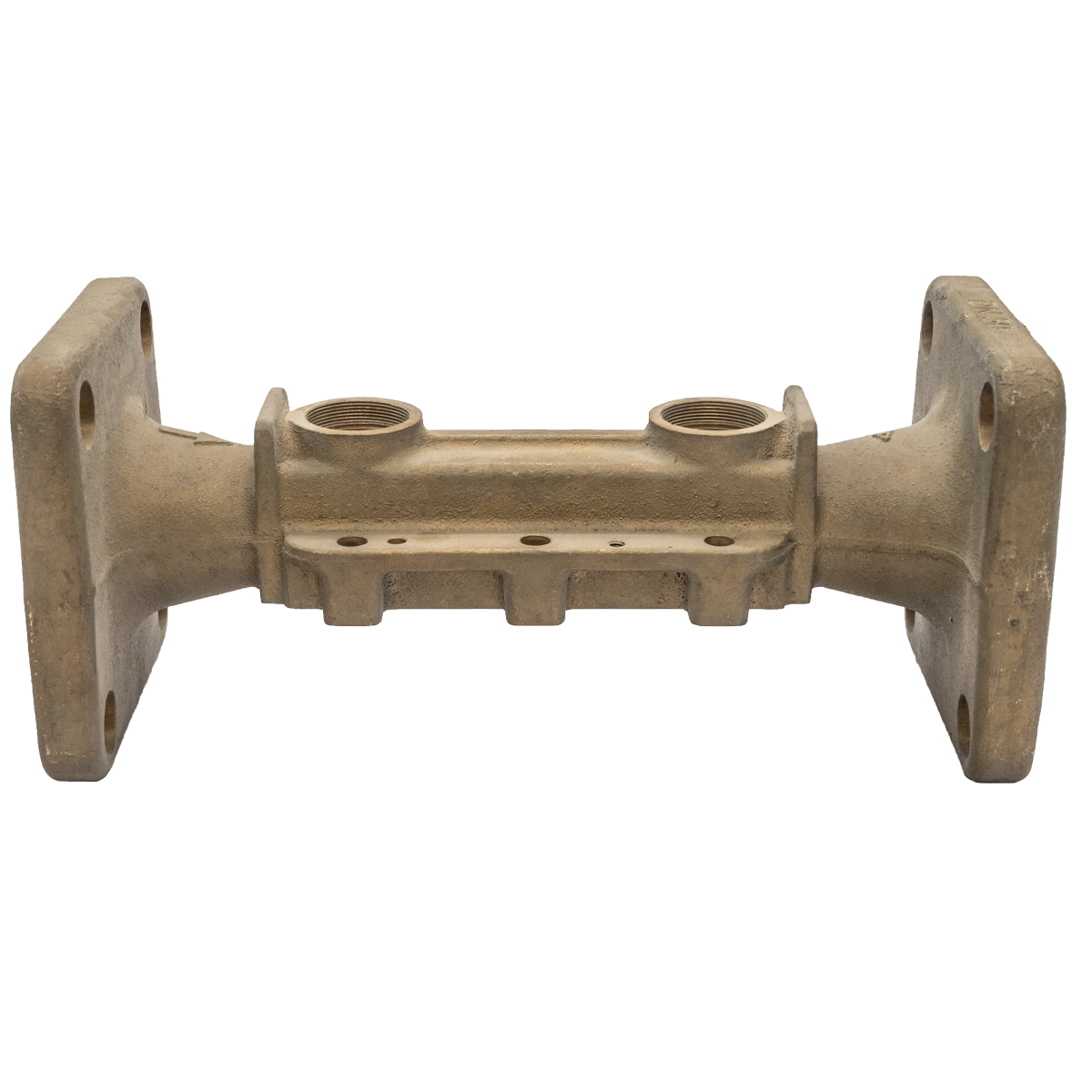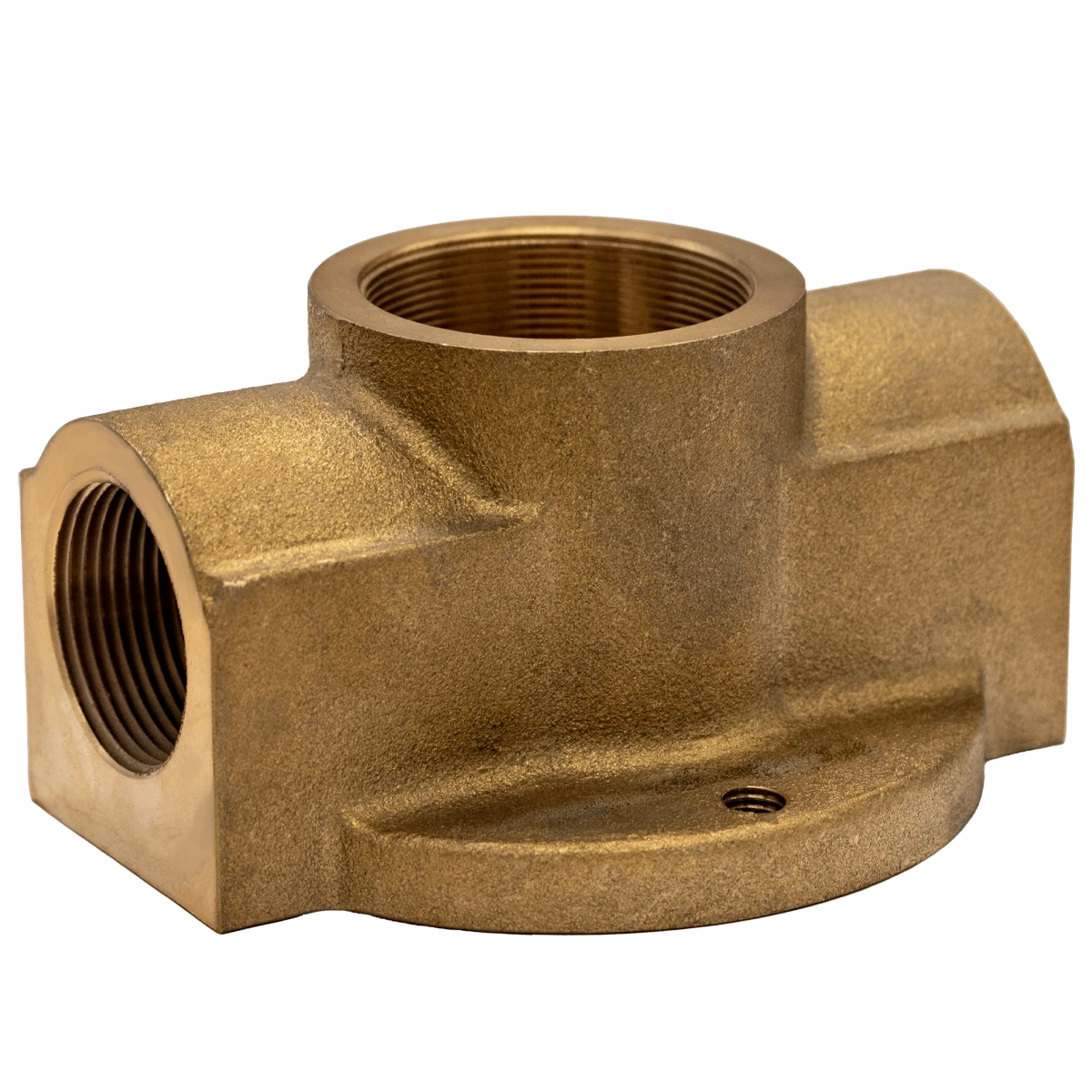Mobile:+86-311-808-126-83
Email:info@ydcastings.com
English
Precision Metal Castings: Aluminium, Stainless Steel & More
In the relentless environments of industrial operations, the integrity and longevity of critical machinery often hinge on one crucial, yet frequently overlooked component: the equipment protective cover. Far from being simple aesthetic additions, these covers serve as the first line of defense against corrosion, abrasion, impact, and extreme temperatures. At the heart of their robust performance lies the versatile and enduring process of metal castings. This comprehensive exploration delves into the world of metal castings, highlighting their critical role in manufacturing superior protective covers, showcasing industry trends, technical capabilities, and real-world applications for the Equipment Protective Cover found at https://www.ydcastings.com/equipment-protective-cover.html.
Industry Trends in Advanced Metal Casting Technologies
The global metal castings market is experiencing significant growth, driven by increasing demands from sectors like automotive, aerospace, heavy machinery, and renewable energy. Modern trends emphasize precision, material innovation, and sustainable practices. Digital simulation tools, such as Finite Element Analysis (FEA) for stress testing and computational fluid dynamics (CFD) for mold filling analysis, are revolutionizing the design and production phases, drastically reducing prototyping cycles and material waste. The push for lightweight yet high-strength components is accelerating the adoption of advanced alloys, including specialized aluminium metal casting and high-performance stainless steel casting solutions. Furthermore, automation and robotics are enhancing consistency and safety in foundries, pushing the boundaries of what is possible with traditional methods like green sand metal casting and advanced techniques such as aluminum die casting and intricate aluminum casting die production.
Environmental regulations and the drive for energy efficiency are also shaping the industry. Foundries are investing in greener technologies, recycling scrap metal, and optimizing energy consumption in melting and heat treatment processes. This commitment to sustainability not only benefits the planet but also yields economic advantages through reduced operational costs and enhanced brand reputation. The evolution of additive manufacturing (3D printing) for intricate patterns and core production is another transformative trend, enabling the creation of highly complex geometries that were once impossible or prohibitively expensive with conventional casting methods.
Technical Parameters of Equipment Protective Covers Manufactured via Metal Castings
The effectiveness of an Equipment Protective Cover is directly tied to the material properties and manufacturing precision afforded by metal castings. Key parameters considered include material composition, mechanical properties (tensile strength, yield strength, hardness), corrosion resistance, thermal conductivity, and dimensional accuracy.
For applications requiring a balance of strength and lightweight characteristics, aluminium metal casting is often preferred. When exceptional corrosion resistance and high-temperature performance are paramount, stainless steel casting is the material of choice. For general industrial use, traditional iron castings offer excellent vibration damping and cost-effectiveness. The selection of casting alloy profoundly impacts the cover's service life and performance in specific environments.
Common Metal Castings Parameters for Protective Covers
Below is a table illustrating typical material specifications for various metal castings commonly used in protective cover applications. These values are general and can vary based on specific alloy grades and heat treatments.
| Casting Type | Material Grade Example | Tensile Strength (MPa) | Yield Strength (MPa) | Hardness (HB) | Corrosion Resistance | Typical Applications |
|---|---|---|---|---|---|---|
| Grey Iron Casting | ASTM A48 Class 30 | 207-276 | N/A (Brittle) | 170-229 | Moderate | General machinery, pump housings |
| Ductile Iron Casting | ASTM A536 65-45-12 | 448-621 | 276-414 | 160-230 | Good | Heavy equipment, valve bodies |
| Aluminium Casting | A356.0-T6 | 228-276 | 165-207 | 70-90 | Excellent (anodized) | Electronics enclosures, lightweight parts |
| Stainless Steel Casting | ASTM A743 CF8M (316) | 485-585 | 170-380 | 130-190 | Superior | Corrosive environments, food processing |
Beyond material, the precision of metal castings ensures tight tolerances, critical for achieving proper fit and sealing. Modern foundries adhere to stringent quality control standards, including ISO 9001 for quality management systems and ASTM (American Society for Testing and Materials) standards for material specifications. These certifications guarantee that each metal castings component meets specified metallurgical and dimensional requirements, essential for reliable equipment protection.
The Manufacturing Journey: Process Flow of Metal Castings for Protective Covers
The creation of high-quality Equipment Protective Cover components through metal castings involves a meticulous, multi-stage process. This journey transforms raw metal into precisely engineered parts, ensuring durability and functional integrity.
1. Pattern Making and Mold Design:
The process begins with creating a pattern, a replica of the desired part, slightly oversized to account for metal shrinkage during cooling. Patterns can be made from wood, metal, plastic, or even 3D-printed materials for complex designs. For methods like green sand metal casting, the pattern is used to create an impression in a sand mold. For die casting or investment casting, a mold tool or wax pattern is designed and fabricated.
2. Molding and Core Making:
Once the pattern is ready, the mold is formed. In green sand metal casting, sand, clay, and water are compacted around the pattern in a flask. The pattern is then carefully removed, leaving a cavity. If the protective cover requires internal features or hollow sections, cores (made of sand or other materials) are placed within the mold cavity. For aluminum die casting, steel dies are machined to the final part shape, and for investment casting, wax patterns are assembled into a "tree" and coated with ceramic slurry.

3. Melting and Pouring:
The selected metal alloy (e.g., aluminium metal casting alloy, stainless steel casting alloy) is melted in a furnace (induction, electric arc, or cupola furnace) to a precise temperature. Alloying elements are added to achieve the desired material properties. Once molten, the metal is carefully poured into the prepared mold cavity. This step requires precise control of temperature and pouring speed to ensure complete filling of the mold and to avoid defects like cold shuts or gas porosity. The specific pouring method will vary depending on the casting process; for instance, aluminum die casting involves injecting molten metal under high pressure into the die cavity.
4. Cooling and Solidification:
After pouring, the molten metal cools and solidifies within the mold. This stage is critical as the cooling rate affects the microstructure and mechanical properties of the final metal castings. The shrinkage allowance factored into the pattern design accommodates the contraction of the metal as it cools.
5. Fettling and Finishing:
Once solidified, the casting is removed from the mold. This often involves breaking the sand mold (for green sand metal casting) or opening the dies (for aluminum die casting). Excess metal, such as risers (reservoirs of molten metal that feed the solidifying part) and gates (channels for molten metal entry), are removed through cutting, grinding, or breaking. Further finishing processes may include shot blasting for surface cleaning, heat treatment to enhance mechanical properties (e.g., solution treatment and aging for aluminium metal casting), and machining (e.g., CNC machining) to achieve final dimensional accuracy, surface finish, and intricate features.
6. Inspection and Quality Control:
The final stage involves rigorous inspection to ensure the metal castings meet all specified requirements. This includes:
- Dimensional Inspection: Using calipers, CMMs (Coordinate Measuring Machines), or 3D scanners to verify dimensions against design specifications, often adhering to ANSI (American National Standards Institute) tolerances.
- Visual Inspection: Checking for surface defects like cracks, pores, or inclusions.
- Non-Destructive Testing (NDT): Techniques such as X-ray radiography, ultrasonic testing, magnetic particle inspection, and liquid penetrant inspection are used to detect internal flaws.
- Material Analysis: Spectrometry or chemical analysis to confirm the alloy composition.
- Mechanical Testing: Tensile strength, yield strength, hardness, and impact resistance tests to verify mechanical properties, often to ISO (International Organization for Standardization) or ASTM standards.
This comprehensive quality control ensures that every Equipment Protective Cover component delivered is reliable and performs optimally in its intended application. The adherence to standards like ISO 9001:2015 throughout the manufacturing process is a testament to the commitment to quality and consistency.

Technical Advantages of Metal Castings for Equipment Protective Covers
Metal castings offer unparalleled advantages for manufacturing Equipment Protective Covers:
- Design Freedom: Casting allows for complex geometries, intricate internal passages, and integrated features, which are challenging or impossible with other manufacturing methods. This enables optimal design for cooling, sealing, and structural integrity.
- Material Versatility: A vast range of ferrous and non-ferrous alloys can be cast, including various grades of iron, steel (e.g., stainless steel casting), aluminum (e.g., aluminium metal casting), bronze, and brass, each offering specific properties like corrosion resistance, wear resistance, or thermal conductivity.
- Cost-Effectiveness for Volume Production: While initial tooling costs can be higher, for medium to high volume production, metal castings are highly economical due to reduced material waste and efficient production cycles.
- Superior Mechanical Properties: Compared to fabrication, castings often exhibit isotropic (uniform) mechanical properties throughout the part, leading to predictable performance under stress. Heat treatment can further enhance strength, hardness, and ductility.
- Excellent Surface Finish and Dimensional Accuracy: Modern casting techniques, especially aluminum die casting and investment casting, can produce parts with exceptional surface finishes and tight dimensional tolerances, minimizing post-casting machining.
- Durability and Longevity: Cast components are inherently strong and durable, providing long service life even in harsh environments, reducing the need for frequent replacement and maintenance. For example, a well-designed and cast protective cover can exhibit a service life exceeding 20 years in typical industrial conditions, significantly outperforming fabricated alternatives.
Application Scenarios and Product Advantages of Equipment Protective Covers
The Equipment Protective Cover, meticulously crafted through advanced metal castings, finds indispensable applications across a multitude of heavy industries, showcasing its core advantages such as energy efficiency, superior corrosion resistance, and robust impact protection.
- Petrochemical Industry: In refineries and chemical plants, covers are exposed to corrosive chemicals, high temperatures, and flammable gases. Stainless steel casting covers provide critical protection for sensors, control panels, and junction boxes, preventing dangerous leaks and ensuring operational safety. Their inherent anti-corrosion properties reduce the need for frequent maintenance, contributing to lower operational costs and enhanced reliability. For example, an Equipment Protective Cover made from CF8M (316L) stainless steel can withstand exposure to concentrated acids and chlorides for decades.
- Metallurgical Industry: Furnaces, rolling mills, and foundries generate immense heat, dust, and abrasive particles. Heavy-duty metal castings are essential for protecting hydraulic lines, electrical conduits, and monitoring equipment from thermal stress and mechanical damage. The high temperature resistance and structural integrity of cast iron or specialized steel covers prevent catastrophic failures.
- Water and Wastewater Treatment: Pumps, valves, and filtration systems are constantly exposed to water, chemicals, and microbial growth. Protective covers made from corrosion-resistant alloys like aluminium metal casting with appropriate coatings, or stainless steel casting, prevent degradation, ensure hygienic conditions, and extend the lifespan of expensive equipment. Their sealed design also prevents ingress of contaminants, maintaining system efficiency.
- Energy Sector (Oil & Gas, Power Generation): From offshore drilling platforms to power plant turbines, equipment operates under extreme pressure, vibration, and environmental exposure. Cast protective covers shield vital components from salt spray, sand, ice, and physical impact, ensuring continuous operation and preventing costly downtime. The high strength-to-weight ratio of aluminium metal casting makes it ideal for remote or weight-sensitive installations.
- Manufacturing and Heavy Machinery: In factories and construction sites, equipment is vulnerable to accidental impacts, debris, and fluid spills. Robust metal castings covers provide essential physical barriers for motors, gears, and sensitive electronics, significantly reducing maintenance and replacement costs. The ability to cast complex internal ribbing enhances structural rigidity without adding excessive weight.
The core advantages of these covers—energy efficiency and anti-corrosion properties—are derived from the inherent qualities of metal castings. Their precision fit minimizes ingress points for contaminants, leading to less downtime and more efficient operation (indirect energy savings from reduced maintenance). The selection of corrosion-resistant alloys or application of advanced coatings ensures the covers themselves do not degrade, preserving the protected equipment and extending its operational life significantly.
Manufacturer Comparison and Supplier Selection
When selecting a supplier for metal castings-based Equipment Protective Covers, several critical factors differentiate top-tier manufacturers. It's not just about the lowest price, but about the total value, including quality, reliability, and support. A discerning client should evaluate:
| Feature | Basic Supplier | Advanced/Specialized Supplier (e.g., focusing on precision metal castings) |
|---|---|---|
| Quality Certifications | Maybe ISO 9001 (basic) | ISO 9001:2015, Industry-specific (e.g., PED for pressure equipment, ASTM, ANSI), and potentially material-specific certifications. |
| Material Expertise | Limited range of common alloys. | Extensive knowledge across ferrous and non-ferrous alloys, including specialized aluminium metal casting and stainless steel casting, with metallurgical support. |
| Manufacturing Processes | Primarily one or two methods (e.g., only green sand metal casting). | Multiple capabilities: green sand metal casting, investment casting, aluminum die casting, aluminum casting die production, and often CNC machining for post-processing. |
| Engineering & Design Support | Minimal or none; build to print only. | Full design for manufacturability (DFM), CAD/CAM, simulation (FEA, casting simulation), and prototyping services. |
| Quality Control & Testing | Basic visual and dimensional checks. | Comprehensive NDT (X-ray, UT, MPI), CMM reports, metallurgical analysis, mechanical testing, and full traceability. |
| Lead Time & Delivery | Variable, potentially long for complex parts. | Reliable and predictable lead times, capacity for urgent orders, efficient logistics. |
| Post-Processing Capabilities | Limited, often outsourced. | Extensive in-house capabilities: machining, heat treatment, surface finishing (painting, anodizing, powder coating), assembly. |
| Customer Service & Support | Reactive. | Proactive, dedicated account managers, technical support, long-term partnership approach. |
Companies with decades of experience in metal castings are often preferred, as their accumulated knowledge and established quality systems translate directly into more reliable and high-performance products. Our company, for instance, leverages extensive experience in crafting precision metal castings to deliver Equipment Protective Covers that meet the most demanding industry specifications.
Customization Solutions for Unique Applications
One of the most significant advantages of metal castings is their inherent flexibility in customization. For Equipment Protective Covers, this means the ability to tailor designs precisely to unique equipment configurations, environmental challenges, and performance requirements. Customization solutions typically involve:
- Material Selection: Choosing the optimal alloy (e.g., specific grades of aluminium metal casting for lightweight applications, or specialized stainless steel casting for extreme corrosion) based on operating conditions and desired lifespan.
- Design Optimization: Collaborating with client engineers to refine the cover's geometry for optimal fit, sealing, heat dissipation, and structural integrity. This often involves leveraging advanced CAD software and simulation tools (FEA) to predict performance before physical production.
- Integrated Features: Incorporating mounting points, cable glands, inspection windows, ventilation louvers, or specific locking mechanisms directly into the casting design, reducing the need for secondary operations and improving overall strength.
- Surface Finishes: Applying specialized coatings, paints, or treatments (e.g., anodizing for aluminium metal casting, passivation for stainless steel casting) to enhance corrosion resistance, UV protection, or aesthetic appeal.
- Prototyping and Iteration: Providing rapid prototyping options, sometimes utilizing 3D printing for patterns or small batch runs, to test designs and make necessary adjustments before committing to full-scale production.
A reputable metal castings supplier will offer comprehensive engineering support from concept to completion, ensuring the customized Equipment Protective Cover not only fits perfectly but also delivers superior performance and longevity.
Real-World Application Cases and Client Feedback
Our commitment to delivering high-quality metal castings for protective covers is reflected in numerous successful projects across diverse industries. Here are a few examples showcasing the practical benefits and client satisfaction:
- Case Study 1: Harsh Marine Environment Protection
Challenge: A major offshore drilling company needed highly durable protective covers for sensitive electronic control units on their platforms, which were constantly exposed to saltwater, high winds, and extreme temperatures. Traditional fabricated covers were corroding rapidly, leading to frequent replacements and costly downtime.
Solution: We engineered and manufactured custom Equipment Protective Covers using specialized stainless steel casting (Duplex SS 2205) known for its superior resistance to chloride stress corrosion cracking. The covers were designed with integrated sealing features and a robust mounting system via a precise aluminum casting die process. Through meticulous quality control, including salt spray testing and dimensional validation, we ensured flawless performance.
Outcome: The new cast covers dramatically improved equipment reliability, extending the lifespan of the control units by over 50%. The client reported a 30% reduction in maintenance costs related to protective enclosures within the first year. "The cast stainless steel covers from [Your Company Name] have been a game-changer for our offshore operations. Their durability in such a corrosive environment is unmatched," commented the Head of Maintenance.
- Case Study 2: Lightweight Enclosures for Robotics
Challenge: An industrial robotics manufacturer required lightweight, yet rigid protective enclosures for their robotic arm joints. The existing fabricated aluminum enclosures were prone to fatigue cracking under high-frequency vibrations and limited the robot's speed due to weight.
Solution: We proposed and delivered precision aluminium metal casting covers for the robot joints. Utilizing advanced aluminum die casting techniques, we were able to achieve complex internal ribbing for enhanced stiffness while minimizing wall thickness. The intricate aluminum casting die allowed for the integration of mounting points and cable routing channels directly into the part.
Outcome: The new cast covers reduced the weight of each joint by 15% and significantly improved structural rigidity, allowing the robot to operate at higher speeds and with greater precision. The client experienced a noticeable reduction in warranty claims related to enclosure failures. "The expertise in aluminium metal casting provided by [Your Company Name] truly optimized our robot's performance. The weight savings and improved durability are invaluable," stated the R&D Director.
Frequently Asked Questions (FAQ)
- Q1: What types of metals can be used for casting Equipment Protective Covers?
- A1: We work with a wide range of metals, including various grades of cast iron (grey, ductile), steel (carbon, alloy, stainless steel casting), and non-ferrous alloys such as aluminium metal casting, brass, and bronze. The choice depends on the specific application's requirements for strength, corrosion resistance, weight, and cost.
- Q2: How are the dimensions and tolerances controlled in Equipment Protective Covers made via metal castings?
- A2: Dimensional control is achieved through precise pattern/die design (accounting for shrinkage), controlled pouring and cooling processes, and post-casting machining (CNC machining). We utilize CMMs and advanced metrology tools to ensure parts meet strict ANSI and ISO dimensional tolerance standards.
- Q3: What inspection standards do you adhere to for metal castings?
- A3: We adhere to international standards such as ISO 9001:2015 for quality management, ASTM for material specifications, and often specific client-mandated standards. Our quality control includes visual inspection, dimensional checks, NDT (X-ray, UT, MPI), and mechanical/chemical analysis.
- Q4: What is the typical service life of an Equipment Protective Cover made from metal castings?
- A4: The service life varies significantly based on material, operating environment, and maintenance. However, high-quality metal castings for protective covers are designed for extreme durability, often providing a service life of 15 to 30+ years, especially when using corrosion-resistant materials like stainless steel casting or specially treated aluminium metal casting.
- Q5: Can you provide custom design and engineering support for protective covers?
- A5: Absolutely. We offer comprehensive engineering support, from initial concept development and material selection to DFM (Design for Manufacturability) analysis, CAD modeling, FEA simulation, and rapid prototyping. Our goal is to translate your specific needs into an optimal cast solution.
- Q6: What is the typical lead time for custom metal castings for protective covers?
- A6: Lead times vary depending on complexity, material, and order volume. For new custom projects involving pattern/die creation, it typically ranges from 8-16 weeks for initial samples. Repeat orders with existing tooling can be fulfilled much faster, often within 4-8 weeks, depending on our production schedule and the casting method (e.g., aluminum die casting generally has faster cycle times than investment casting).
- Q7: What kind of warranty or after-sales support do you offer?
- A7: We stand behind the quality of our metal castings with a standard warranty against manufacturing defects. Our commitment extends to ongoing technical support, ensuring long-term satisfaction and performance of our Equipment Protective Covers. We also offer advice on installation standards and maintenance best practices.
Enhancing Trustworthiness: Delivery, Warranty, and Client Support
At the core of our operations is a commitment to trustworthiness. We understand that timely delivery and reliable post-sales support are as crucial as product quality. Our delivery timelines are meticulously managed through sophisticated production planning, ensuring components manufactured through metal castings reach our clients precisely when needed. For instance, for standard aluminium metal casting orders, we typically maintain a lead time of 6-8 weeks, while more complex stainless steel casting projects might range from 10-14 weeks, depending on post-processing requirements. We offer flexible shipping options, including expedited services for urgent requirements.
Our products are backed by a comprehensive warranty that covers material and manufacturing defects, reflecting our confidence in the durability and integrity of our metal castings. Beyond the sale, our dedicated client support team provides ongoing technical assistance, troubleshooting, and guidance on product maintenance and installation standards. We aim to forge long-term partnerships, ensuring our Equipment Protective Covers continue to perform optimally throughout their impressive service life, which can often exceed two decades in challenging industrial environments. Our adherence to ISO 9001:2015 principles underlines our continuous commitment to quality and customer satisfaction.
Conclusion: The Indispensable Role of Metal Castings
The Equipment Protective Cover, though often operating out of sight, is a linchpin in industrial reliability. Its effectiveness is profoundly elevated by the robust, versatile, and precise nature of metal castings. From the inherent strength and corrosion resistance of stainless steel casting to the lightweight durability of aluminium metal casting produced through advanced techniques like aluminum die casting and intricate aluminum casting die processes, casting remains the superior choice for critical protective applications. The ability to customize designs, integrate complex features, and ensure stringent quality control through every stage, from green sand metal casting to final inspection, ensures that these covers provide unparalleled protection, extending equipment life, reducing maintenance costs, and enhancing operational safety. As industries continue to evolve, the demand for high-performance, custom metal castings for protective solutions will only grow, solidifying their indispensable role in safeguarding industrial assets.
References and Further Reading:
- "Key Trends and Market Opportunities in the Global Metal Casting Industry." Foundry Management & Technology. [https://www.foundrymag.com/trending-topics/article/22026880/key-trends-and-market-opportunities-in-the-global-metal-casting-industry](https://www.foundrymag.com/trending-topics/article/22026880/key-trends-and-market-opportunities-in-the-global-metal-casting-industry)
- "Advances in High-Performance Casting Alloys." Journal of Materials Science. (This would typically link to a specific journal article, but for a general example, it's a representative title.) [https://link.springer.com/journal/10853](https://link.springer.com/journal/10853)
- "The Role of Digitalization in Modern Foundries." American Foundry Society (AFS) - Technical Paper Repository. [https://www.afsinc.org/](https://www.afsinc.org/)
-
Materials Used in Manufacturing Cap End Pipe FittingsNewsNov.24,2025
-
Material Properties of CF8M CastingNewsNov.24,2025
-
How to Inspect Pump Cap Ends for DamageNewsNov.21,2025
-
Backward Curved Impeller – Efficient Airflow Solutions for Industry | YD CastingsNewsNov.21,2025
-
Automobile Water Pump - Efficient, Quiet, Durable & ElectricNewsNov.21,2025
-
Impeller for Pumps – High-Efficiency, Durable, OEM-ReadyNewsNov.21,2025











